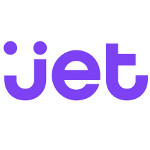By Stephen F. Pinson
Scott & Scott, LLP
Indemnification is a very important provision in a software agreement. It transfers legal risk between contracting parties, and the indemnification provision acts like an insurance policy for future lawsuits where a contracting party is sued by a third-party to the contract. Because this provision is a risk transfer mechanism, it is crucial to understand it and to successfully negotiate it to prevent unwanted risk.
Before we jump into how to negotiate an indemnification provision, there are some basic definitions that need to be understood:
- An Indemnitee is a contracting party who is entitled to be indemnified.
- On the other hand, an Indemnitor promises to defend, indemnify, and hold harmless the Indemnitee against liability from a third person, or against loss resulting from liability.
- A third-party is a person or entity that is not a party to the original contact, but who sues one of the contracting parties.
So how does an indemnification provision operate? Typically, an indemnification provision is triggered when a third-party to the contract brings a claim against one of the contracting parties (i.e., contracting party vs. third-party claimant). Very rarely, is it triggered when there is a direct party claim (i.e., contracting party vs. contracting party). At its core, an indemnification provision allows the party who is responsible for liability (the Indemnitee) to transfer his loss or liability to another party who will represent them in court (the Indemnitor), and pick up the litigation costs and liability from a third-party who bring a lawsuit against the Indemnitee.
One of the major pitfalls in negotiating an indemnification section is contained in the structure of the contract provision itself and the intent of the software licensor. Many contracts include boilerplate language, thus, contract negotiators must develop a systematic way to review the language and then develop a strategy to address the indemnification section for their side of the deal. To do this, the parties must first understand the risks involved with a particular software license and negotiate for the specific risk type.
The best way to put this into action is to review the indemnification section and put the language into more concrete roadmap to negotiate the contract by asking the following questions: (1) what are the licensor’s objectives in the indemnification section, (2) what are licensee’s objectives in the indemnification section, (3) what is a checklist of elements and questions that should be negotiated in a indemnification section, and (4) what is a general checklist of provisions that should be included in a indemnification section.
I will discuss each one of these questions in upcoming blogs.
Remember, an indemnification section is a specialized risk transfer section of a software contract. It is crucial to understand it and to successfully negotiate it to prevent unwanted risk. It is always important to seek advice from experienced legal counsel in order to understand all the risks involved when negotiating these types of provisions in a software contract.
 Regardless of whether the publisher is Microsoft, Adobe, Autodesk, Oracle, IBM or any of their trade groups including the BSA | The Software Alliance, Robert Scott of
Regardless of whether the publisher is Microsoft, Adobe, Autodesk, Oracle, IBM or any of their trade groups including the BSA | The Software Alliance, Robert Scott of  In
In  CNBC is reporting
CNBC is reporting A patent-holding company that won a huge court victory against Apple had its victory wiped out, and its stock plunged by more than 40 percent,
A patent-holding company that won a huge court victory against Apple had its victory wiped out, and its stock plunged by more than 40 percent,  A group of 12 prominent corporate executives and financial leaders recently a discussion of
A group of 12 prominent corporate executives and financial leaders recently a discussion of  Apple Inc. has asked the U.S. Supreme Court to clear the way for the iPhone maker to secure hundreds of millions in damages from Samsung Electronics Co Ltd in a case over smartphone design patents,
Apple Inc. has asked the U.S. Supreme Court to clear the way for the iPhone maker to secure hundreds of millions in damages from Samsung Electronics Co Ltd in a case over smartphone design patents, 
 The U.S. watchdog for consumer finances unveiled on Thursday a proposal to toughen regulation of the multibillion-dollar debt collection industry, with a focus on keeping agencies from pushing people to pay debts they do not owe, informing borrowers of their rights and cutting down on calls to debtors, according to
The U.S. watchdog for consumer finances unveiled on Thursday a proposal to toughen regulation of the multibillion-dollar debt collection industry, with a focus on keeping agencies from pushing people to pay debts they do not owe, informing borrowers of their rights and cutting down on calls to debtors, according to  Gibson, Dunn & Crutcher
Gibson, Dunn & Crutcher The U.S. Department of Justice has filed lawsuits to block the proposed mergers of four of the nation’s five biggest health insurers,
The U.S. Department of Justice has filed lawsuits to block the proposed mergers of four of the nation’s five biggest health insurers,